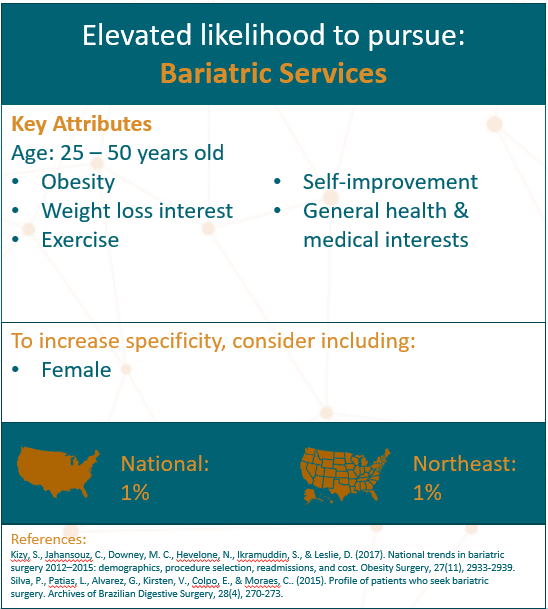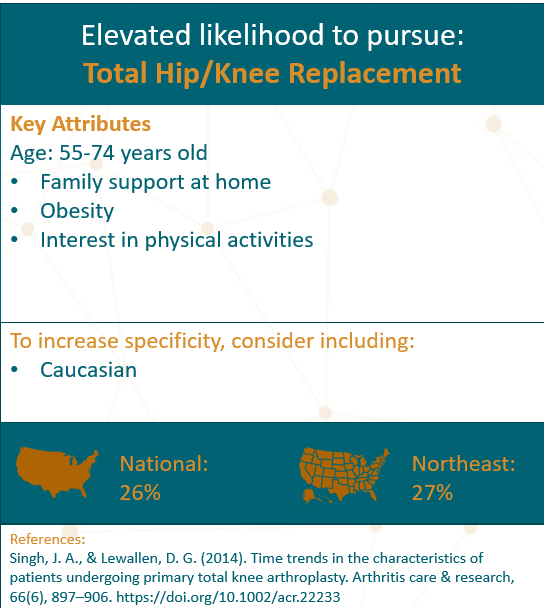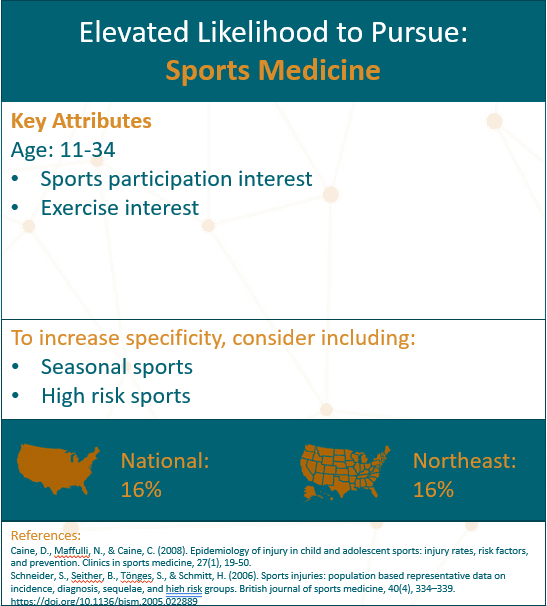Healing Healthcare: Part 5: Health Care Messaging - Just for You
Tim Duer
Healthcare, Healthcare Industry, Marketing
January 8, 2022
Healing Healthcare: Part 5: Health Care Messaging - Just for You
"Your New Year's resolution was to get back to running and your week one plan hinges on buying a new pair of running shoes. As always, your first step was to search for “top running shoes” online….3 months later, you still haven’t bought new shoes (or gone for a run), but the side bar ad on a website is still telling you about the upcoming release of the new Asics Kayano 27. Everyone has been there –this is a typical (albeit stereotypical and a bit outdated) example of personalized marketing."
As the above story shows, marketing has evolved. The days of singular marketing campaigns that focus on one broad sweeping message that appeals to the masses, or maybe to a large market segment, continue to fade into the background. The present and future of marketing aim to deliver the right message to the right potential consumer at the right time – precision marketing. Most consumers are no longer surprised to receive personalized marketing messages. In fact, most prefer it. While this revolution has been moving at a rapid pace in the retail, brand, and political spaces, healthcare has been a bit slower to embrace this shift. However, as the vision of the patient as a consumer continues to evolve, marketing and communications efforts in healthcare are shifting towards personal/precision messaging as well. Personalized outreach presents substantial opportunities in improving care delivery and provides forward-thinking health systems to improve their operational efficiency; however, there are also several challenges that must be considered.
Personalized Marketing
Modern marketing efforts have long focused on the goal of moving from a more mass-market approach to a more narrow, segmented approach. Mass marketing can be successful in a scenario where an entire market wants the same product, will be receptive to the same message, and has access to the same content – this hardly applies to modern healthcare or any modern product for that matter. Instead, modern marketers have achieved greater success by identifying a key audience segment, or segments, and constructing messages to meet these smaller groups’ collective desires. Digital content has provided marketers with even more potential for segmentation. Rather than constructing content that is relevant to a large audience based upon more general attributes like geography, gender and/or age; personalized content utilizes any number of demographic traits, consumer data, and personal online activity to generate messages that are precise to an individual’s likely needs and wants.
These personalized messages have also been shown to be effective. AdWeek (2021) found that 63% of poll respondents said they pay more attention to ads when they are personalized to the needs of their households. This personalized marketing journey is still evolving, but consumers continue to be receptive, and even have begun to expect this kind of experience. In a 2020 poll, 92% of marketers state that their customers expect a personalized experience, up from 85% in 2019 (Evergage, 2021). As consumers accept and come to expect this content in other spaces, the healthcare sector will need to accelerate its utilization of personalization.
Personal Healthcare Messaging
-
Personalization in healthcare messaging could be as simple as making sure that a consumer receives service-line specific campaigns that are most likely to appeal to them. Figure 1 shows some examples of health service audience attributes based solely on available consumer data, not requiring any inclusion of health record information.
- A 24-year-old recreational softball player will likely be more receptive to sports medicine messaging, as opposed to information on total hip replacements.
- Providing urgent care center information is certainly relevant to the parents of an active 9-year-old boy.
- Or making sure that residents in close proximity to a new suburban outpatient center receive messaging specific to services at that site rather than only those at the city hospital.
- A 24-year-old recreational softball player will likely be more receptive to sports medicine messaging, as opposed to information on total hip replacements.
Figure 1. Personalized audiences: Defining audiences based upon available consumer data



- Other components of personalization are more intricate and require a knowledge of the patient/consumer media preferences. This could include preferred delivery platforms – does someone prefer text messages, email, direct mail, or digital video content? Or should messages be delivered over multiple media? This also includes the timing of messages – promoting a new allergist in the Spring when symptoms are beginning to peak for many.
- The most specific messages rely on an even more nuanced understanding of what “drives” someone’s choice of healthcare services. Campaigns using these drivers could ensure that one consumer receives messages that tout compassionate care, while their neighbor receives content that focuses on the same hospital/services but calls out the publications and research of clinical staff. These subtle differences elevate the impact of messaging and the likelihood of recipients responding.
Benefits
As healthcare systems shift from traditional mass marketing to a targeted strategy that aims to appeal to an individual’s needs, opportunities emerge to use this approach to not only increase patient acquisition but also to improve care delivery. The same methods that seek to increase patient acquisition and volume can be employed to drive improved patient engagement with plans of care and medical recommendations. The intersection of these two components provides a unique opportunity to not only address financial/operational goals, but also the welfare and outcomes of patients.
Operations: Personalized Marketing = Marketing Efficiency
In times of shrinking marketing budgets, personalized messaging provides an opportunity for teams to truly maximize their ROI. Whereas mass marketing requires large budgets to reach the largest number of potential consumers, personalized marketing efforts instead seek a lean approach that minimizes waste. Carefully constructing audiences and matching them with the messages and services which they are most likely to identify optimizes the likelihood that consumers engage with the content. Targeted messages also provide more potential to monitor the outcomes of contacts, regardless of media utilized. As a result, Key Performance indicators regarding marketing campaign success are much more measurable - and budget justification is much easier.
Patient Outcomes: Prevention and the Patient Journey
As discussed in Healing Healthcare Part 3: Changing Healthcare Payments, healthcare systems are slowly shifting from medical care that treats problems to care that can prevent health issues. One of the many challenges that accompany an increased focus on prevention and management is the need for more effective patient messaging. Most patients are aware that activities like exercise, healthy eating, and regular check-ups would benefit their health, but many do not follow through. Personalized messaging can utilize a patient’s known interests, circumstances, and history to help craft content with which they are most likely to engage. Patient response can be observed and content with beneficial results can be utilized to impact the content that is delivered to others. This is not just marketing for sales outcomes, but instead, it is utilizing a personalized marketing approach to improve the health of patients.
A second opportunity for patient-benefiting personalized messaging comes in the form of improving “the patient journey” as patients navigate the health system. The patient journey begins when a patient first engages with a health system, typically through a web search, online portal, or phone call, and continues for as long as he or she is a patient. While many growing health systems provide a consumer with the opportunity to maintain care with one system that includes primary care, hospitals, urgent care. and specialists, the communication provided often feels disjointed. When this journey begins to feel more proactive, rather than reactive, then the patient experience improves (Groszewski, 2020).
This can be most obvious when a primary care doctor recommends that a patient follow up with a specialist, and then the onus falls to the patient to handle the next steps. In too many cases, this results in a patient not following through with the recommendation and going without the best care option. Systems that recognize the personal desires of their patients are best equipped to predict and provide the next steps of care that are needed. They can utilize known risk factors and recommendations to help provide content and education that will benefit the patient’s health in the future. When these personalized messages match clinical expertise, both patients’ and providers’ benefit.
Challenges
Although an ideal version of personalized messaging paints a rosy view of healthcare marketing and patient unity, there are considerable challenges that cannot be overlooked. Some of these difficulties are based upon uprooting previous norms, while others must carefully monitor legal and regulatory considerations.
HIPAA
When discussing personalized messaging and healthcare, the first concern that comes to mind for many is regarding Health Information Portability and Accountability Act (HIPAA) standards. HIPAA regulations are in place to protect a patient’s sensitive personal information, recognizing that health information is deserving of increased protection in comparison to more general consumer data. While these restrictions are in place for the best interests of an individual, there are also challenges associated when a health system seeks to deliver messages that are in the best interests of the patient. Careful considerations must be made anytime a health system utilizes known protected health information to deliver content, no matter the intent. Many health systems now provide patients opportunities to “opt-in” to content or newsletters that deliver educational content. Other marketing teams effectively utilize information from consumer data sets or other sources to help to construct audiences and match consumers with relevant information on services. While this approach avoids any HIPAA concerns, it is still important to ensure that messaging does not “feel” too personal for the recipient and may result in consumer concerns regarding HIPAA violations. While everyone has come to expect to be followed online by the digital ad that won’t go away, many consumers aren’t prepared for these direct messages to come from a health system.
Changes to Data Sharing
There have been many changes to third-party cookie allowances and social media marketing rules, each having a somewhat sizable impact on the digital marketing landscape. These changes have pushed many non-healthcare companies to explore new options to acquire their own data on consumer behaviors through in-app targeting or outputs (Vranica, 2021); however, health systems face more challenges in doing so. When consumer information crosses into protected health information, then utilization restrictions are increased. Health systems and marketing teams continue to investigate options to “firewall” information and maintain separate consumer and patient data sets.
Underserved Groups
Lastly, personalized messaging requires that individuals have a reliable consumer footprint, and often assumes having the potential for digital content delivery. As increased efforts are made to focus on social determinants of health and under-served populations, these assumptions are less likely to hold true. It is important that health systems do not optimize care delivery through personalization and leave historically underserved groups, such as racial and ethnic minorities, low-income groups, and those who live in rural areas, even further behind. Although there are some anticipated barriers, the execution of optimal precision marketing efforts must anticipate the needs of all populations.
What's Next?
Health systems can and should continue to seek ways to develop “smart” audiences – as the patient shifts to a consumer, systems need to recognize that expectations change as well. These expectations provide health system marketers with an opportunity to improve the value for patients and for the company. University of Maryland researchers have defined a simplified goal for healthcare marketers as needing to pursue “a framework of value-centric marketing that puts the consumer front-and-center for marketing activities in healthcare” (Muraski, 2020). Appropriately delivered, high-quality content will look good for patient outcomes and financial performance.
References
Adweek. (2021). Can the digital ad experience be saved? AdWeek.com
Blackbaud (2021) Health marketers guide to data-driven patient acquisition. Blackbaud. https://webfiles.blackbaud.com/files/healthcare-marketers-guide-to-data-driven-patient-acquisition.pdf
Evergage. 2020 trends in personalization. Researchscape International and Everage. https://www.salesforce.com/content/dam/web/en_us/www/documents/reports/researchscape-evergage-2020-trends-in-personalization-report.pdf
Groszewski, W. (2020). The patient journey. Silverline. https://silverlinecrm.com/blog/healthcare/provider/the-patient-engagement-journey-what-it-is-and-why-it-matters/
Muraski, G. (2020, March 3) In Healthcare, Marketing Should Focus on Patients. University of Maryland. https://www.rhsmith.umd.edu/research/healthcare-marketing-should-focus-patients
Vranica, S. (2021, December 2). Big Tech Privacy Moves Spur Companies to Amass Customer Data. Wall Street Journal. https://www.wsj.com/articles/big-tech-privacy-moves-spur-companies-to-amass-customer-data-11638456544?st=hxzsvkoe7tmqfhr&reflink=desktopwebshare_permalink
To learn more, visit Causeway Solutions to get started!